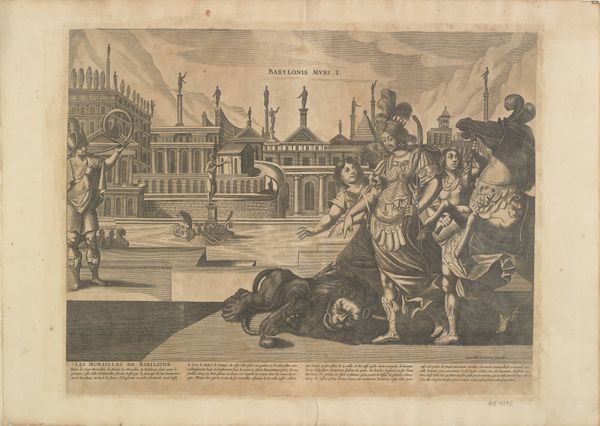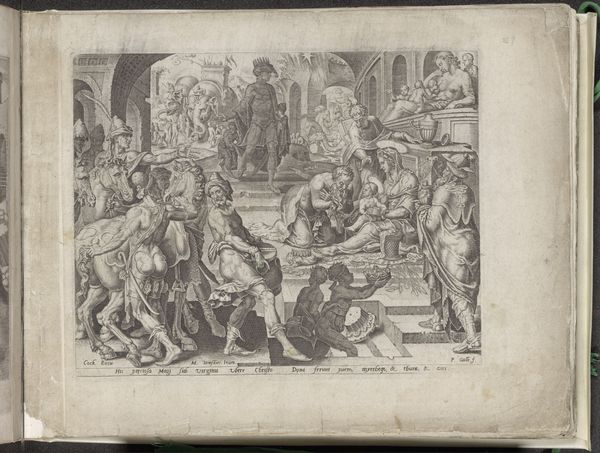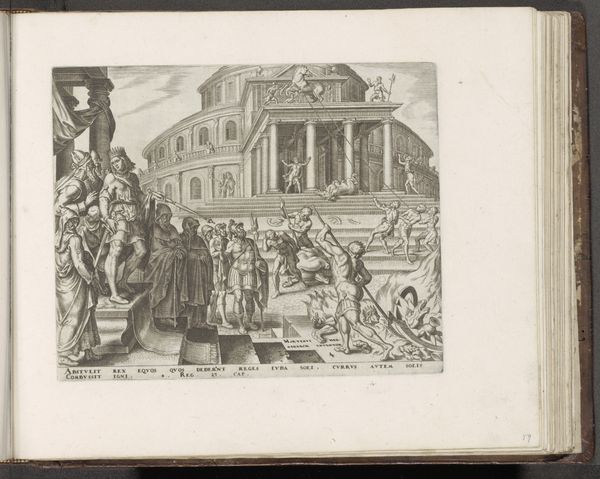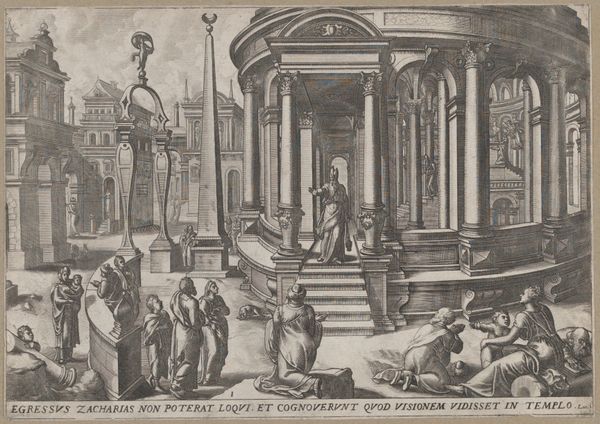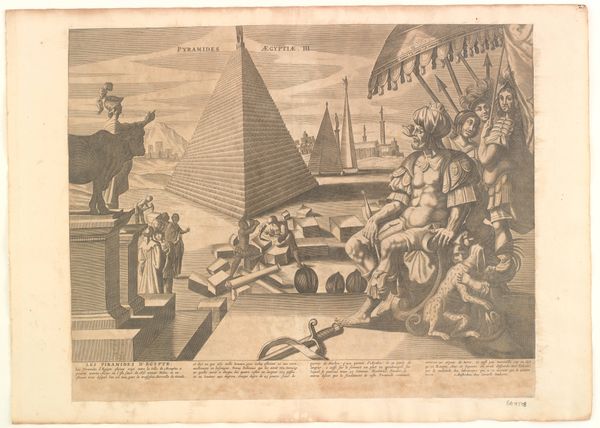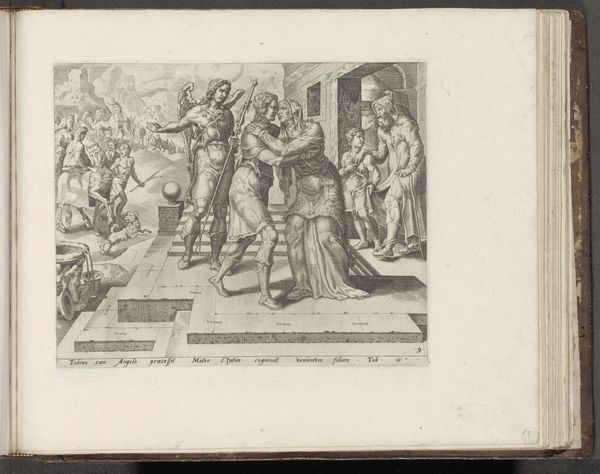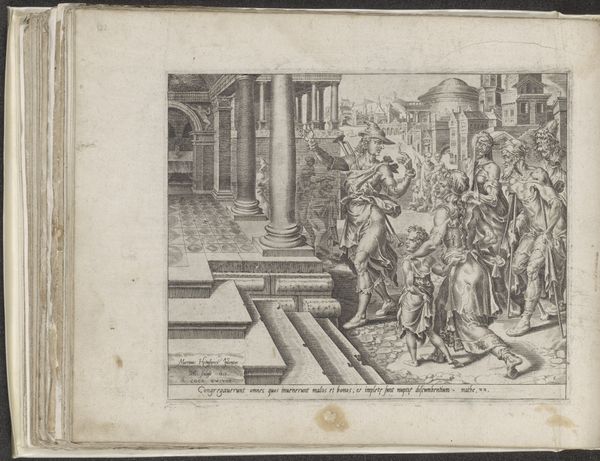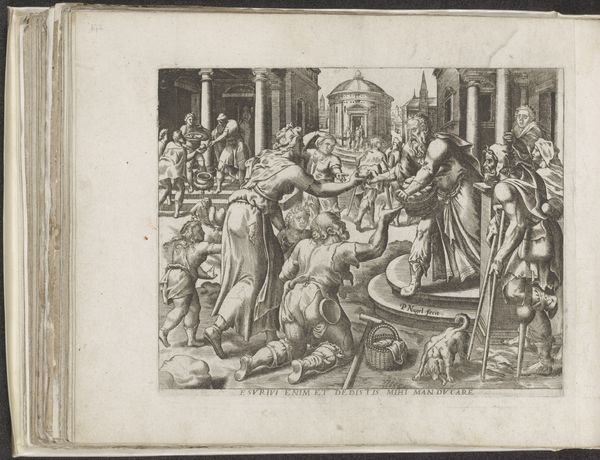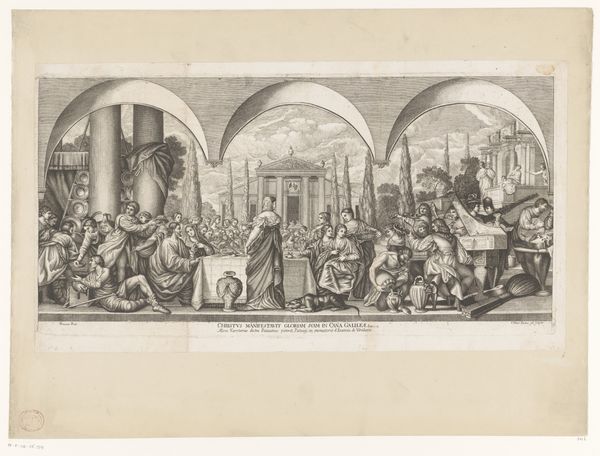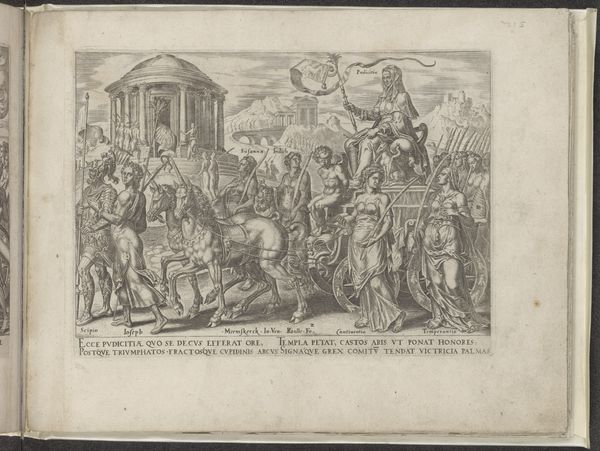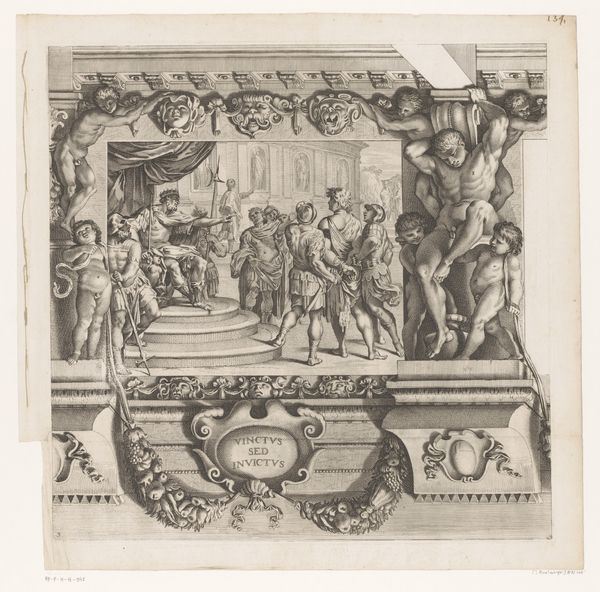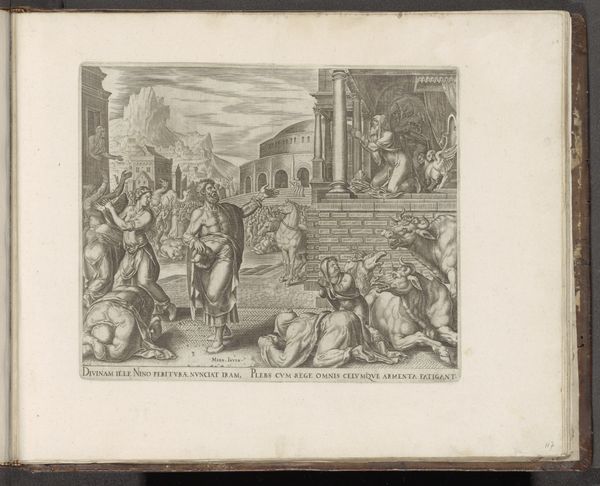
print, engraving, architecture
# print
#
ancient-mediterranean
#
history-painting
#
engraving
#
architecture
Dimensions: 495 mm (height) x 383 mm (width) (bladmaal)
Curator: Here we have a 17th-century engraving titled "The Temple of Diana at Ephesus" by an anonymous artist. It's part of the Statens Museum for Kunst collection. Editor: Wow, it’s incredibly busy, isn't it? Like a stage set bustling with… everything! There's this sense of grand, almost theatrical construction, yet there's something slightly melancholic about the muted tones. Curator: What stands out to me is the depiction of labor. You see the figures diligently building—the careful stacking, the meticulous planning... The architecture is the result of countless hours, isn't it? Also, this piece being an engraving, itself involves intensive labor, transferring design through physical exertion and complex technologies of the printing press, to circulate ideas. Editor: True, there's labor visualized on so many levels here! My eyes keep returning to the details like that little lion curled at the feet of the figure to the left, juxtaposed against this magnificent building project, hinting perhaps at hidden, often unseen contributions to grand constructions... Curator: I find it particularly interesting how the artist presents the architecture itself. It becomes not just a building but an artifact of culture, influenced by the means of production and its cultural value. These structures required a significant degree of consumption for it to be constructed, the exploitation of raw resources... and ultimately, the consumption and expenditure of wealth. Editor: I see your point! I mean, imagine witnessing such an awe-inspiring thing being made… It’s a blend of fascination and, perhaps, even unease as you described; an interesting cocktail of wonder and, thinking through your lens, ethical questioning... Curator: Precisely! It gives the print so much resonance in historical painting— the combination of medium, ancient thematic, architectural details—with the material conditions that helped to make the image, but it pushes boundaries between those artistic approaches to question those hierarchies and reflect upon how each piece gains value, as an architectural accomplishment, or artistic production itself. Editor: Definitely! It makes one ponder who had the resources to even access such imagery when the piece was made. What impact would such an artifact have for the general viewer or an elite with greater insight of architectural concepts? Fascinating stuff! Curator: Absolutely. And in thinking through its display now at SMK, it helps to question our consumption patterns of historical displays. It's never just a pretty image, is it? Editor: Never is. This perspective truly adds new depth when viewing this ancient architecture... Thanks for sharing your insights, very thoughtful take!
Comments
No comments
Be the first to comment and join the conversation on the ultimate creative platform.
